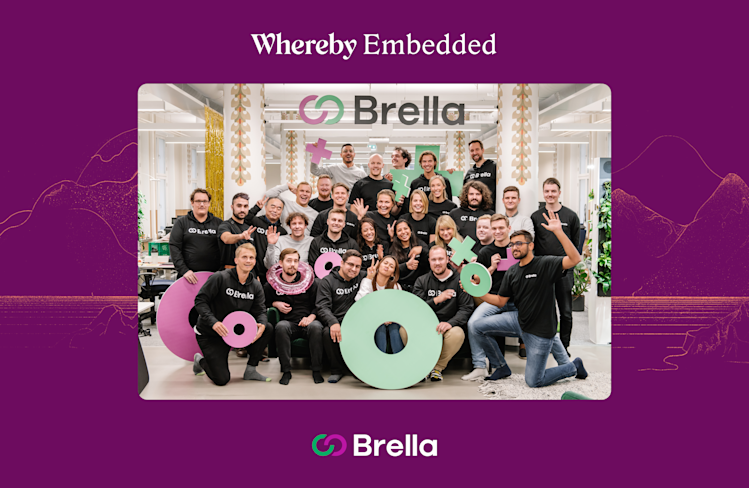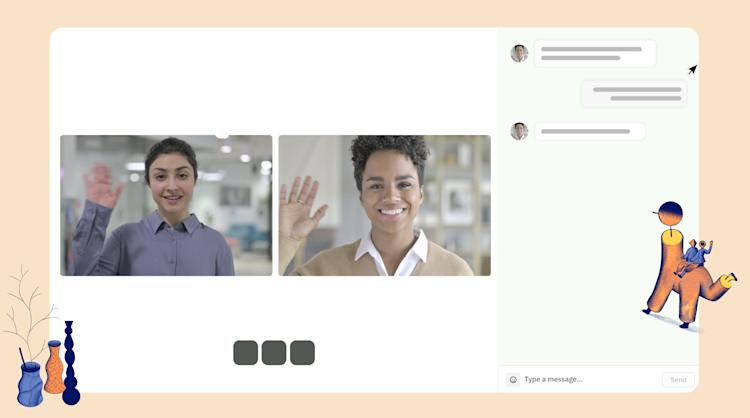After 350,000 Video Meetings, Brella Perfected the Art of Networking
Find out how Brella, a hybrid events platform based in Helsinki, pivoted to become a premier networking service for online events here.
If you’ve ever attended a conference or large-scale corporate event, you know that the “networking” component can seem haphazard and disorganized. A lot of the time, it’s just attendees wandering the floor, drink in hand, hoping to meet the right people.
So when the pandemic moved most of those in-person events online, casual moments of networking went with them. But just because face-to-face meetings were off the table, it didn’t mean that networking itself was cancelled; someone just needed to find a new approach.

Brella, a hybrid events platform based in Helsinki, Finland, is rewriting that narrative. Initially launched as a professional matchmaking service for live event attendees, once COVID-19 lockdowns hit, Brella pivoted to become a premier networking service for online events.
But that’s not to say it was a totally smooth transition; Brella’s video feature wasn’t always powered by Whereby. The original tool led to so many complaints about video quality that the company decided to switch platforms. Since then, Brella has used Whereby to facilitate nearly 350,000 one-to-one meetings. That’s a lot of happy networkers.

“How do you know who to talk to when there might be 1,000 attendees?” says Ville Vanhala, Brella’s co-founder and Head of Customer Success. “You might only have time to meet 10 or 15 people, so you want to be efficient and maximize the time you do have.
Brella’s AI matches event attendees based on their shared interests, needs, and wants, captured through a form – sort of like a dating profile, only for business purposes. It then allows participants to schedule networking on-site or virtually through a video call.

The key to Brella’s success is in its ease of use for both events and meetings. When you register for an event, you define your interests, including what you’re looking for from the event. The platform will send you recommendations of people with similar profiles, allowing you to schedule your video meeting. Similarly, event sponsors can set up virtual booths and specify the kinds of prospects they’d like to meet.
Ville says he learned first-hand the value of video meetings. In 2014, he moved from Finland to the U.S. to earn his master’s degree. Being far from home meant having to communicate with friends and family via video. Today, with customers in 60 different countries, it’s important for him and his team to be able to build trust and relationships via video.
Brella’s platform has hosted over 1,200 virtual events and counting since the start of the COVID-19 pandemic. According to Ville, networking is arguably the most important function Brella serves, especially as events have almost exclusively moved online.
While many virtual events focus heavily on the content side of their programming, meetings and networking are what really drive engagement. This added value isn’t just for attendees, either. Event sponsors benefit greatly from virtual booths where they can meet with ideal prospects and customers face-to-face over video.
“Video meetings empower everyone, especially if they’ve been home for quite some time,” Ville says. “Building trust is important in our business, and that includes attendees and the sponsors who are there to meet prospects and potential customers.”
One of Brella’s clients, Nordic Business Forum, found that attendees who scheduled video meetings were 18% more likely to attend future events, while sponsors who had video meetings enjoyed three times better customer retention.
It’s easy to see how powerful virtual event networking can be to everyone involved – from event organizers to sponsors to attendees.
So, is the future of events online or in person? According to Ville, it’s a mix of both. He sees a future with “hybrid” events that allow people to attend on-site and online simultaneously. The same live content can be streamed online while attendees watch in-person. With hybrid events, people who otherwise might not be able to attend a conference or event in-person can still participate and enjoy all the same networking benefits virtually.
And for attendees who do attend an event in person, they can still have face-to-face meetings with other IRL attendees, while connecting over video with those who might be thousands of miles away. This hybrid approach actually extends the life of an event for organizers, attendees and sponsors, since meetings aren’t limited to just the time of the event.
So, whether you’re setting up one-on-one meetings or hosting a breakout group with a few people, you can still recreate some of that pre-pandemic networking magic. Video meetings are breathing new life into virtual events by bringing back the networking aspect that everyone missed from live conferences.


